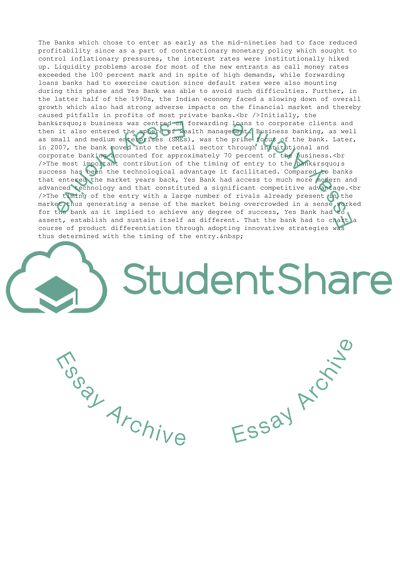Cite this document
(Yes Bank: Competitive Strategies of a Late Entrant Case Study, n.d.)
Yes Bank: Competitive Strategies of a Late Entrant Case Study. https://studentshare.org/management/1715655-yes-bank-competitive-strategies-of-a-late-entrant
Yes Bank: Competitive Strategies of a Late Entrant Case Study. https://studentshare.org/management/1715655-yes-bank-competitive-strategies-of-a-late-entrant
(Yes Bank: Competitive Strategies of a Late Entrant Case Study)
Yes Bank: Competitive Strategies of a Late Entrant Case Study. https://studentshare.org/management/1715655-yes-bank-competitive-strategies-of-a-late-entrant.
Yes Bank: Competitive Strategies of a Late Entrant Case Study. https://studentshare.org/management/1715655-yes-bank-competitive-strategies-of-a-late-entrant.
“Yes Bank: Competitive Strategies of a Late Entrant Case Study”. https://studentshare.org/management/1715655-yes-bank-competitive-strategies-of-a-late-entrant.


